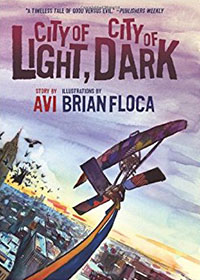 I was living in Los Angeles, so, naturally, I wrote a fantasy about New York City. What’s more I sold it to a publisher. But as I continued to think about the book I had a crucial (and a self-critical) thought: It’s a story about NYC and there are no people of color or Hispanics in it. Wrong.
I was living in Los Angeles, so, naturally, I wrote a fantasy about New York City. What’s more I sold it to a publisher. But as I continued to think about the book I had a crucial (and a self-critical) thought: It’s a story about NYC and there are no people of color or Hispanics in it. Wrong.
I called the editor who had bought the book, and shared my thoughts. Long pause. She said, “I’ll have to talk to marketing about that.”
There were a few more exchanges, the upshot being that if I went in that (inclusive) direction, she no longer wanted the book.
I worked on the book for some more time on my own. Showed the book to a couple of other editors. No one wanted it. One editor said, “It has no salt.”
During that period I read an article by Will Eisner, the great comic book artist. Eisner argued that the comic book (what we would now call a graphic novel) was a perfectly valid form of narrative. I was a devoted comic book reader as a kid, and had recently read Maus by Art Spiegelman. Why not turn my novel into a graphic novel?
I spoke to Richard Jackson, my key editor. “I know nothing about comic books.” I sent him Maus. His response: “It’s marvelous. I’m interested. But where could we find an artist?”
By that time I was living in Providence, Rhode Island, and had struck up an acquaintance with David Macaulay, who, among other things, was teaching illustration as the Rhode Island School of Design.
I told him I was looking for an artist who could do a comic book.
He said, “I have a young student at Brown University. He does a daily comic strip for the Brown student newspaper. Quite talented. His name is Brian Floca. Give him a call.”
I did.
I introduced Brian to Dick Jackson, and the project went forward. Brian and I met every week or two, deciding what Brian should show, and what text would remain. All in all it was a three year project. And a fascinating process at that.
When City of Light, City of Dark was finally published in 1993 it was issued as a hardback. Book stores were baffled. Where should it be shelved? Children’s books? Comic books? Picture books? And the critical response to the book was equally confused. Remember, this was before the great graphic novel explosion.
All that said, it has remained in print (Scholastic) and is often cited as one of the first graphic novels.
Brian and I became good friends, and when I wrote a story about a mouse .… to be continued.
1 thought on “Story Behind the Story #28: <em>City of Light, City of Dark</em>”
I love that not caving in to marketing worked for you… It helped that you had excellent bonafide by that time. I have caved to marketing considerations (at the suggestions of editors) in the revision process, and the stories always lost, eventually not being acquired, to boot.
Your CITY OF LIGHT, CITY OF DARK story behind the story is inspiring.